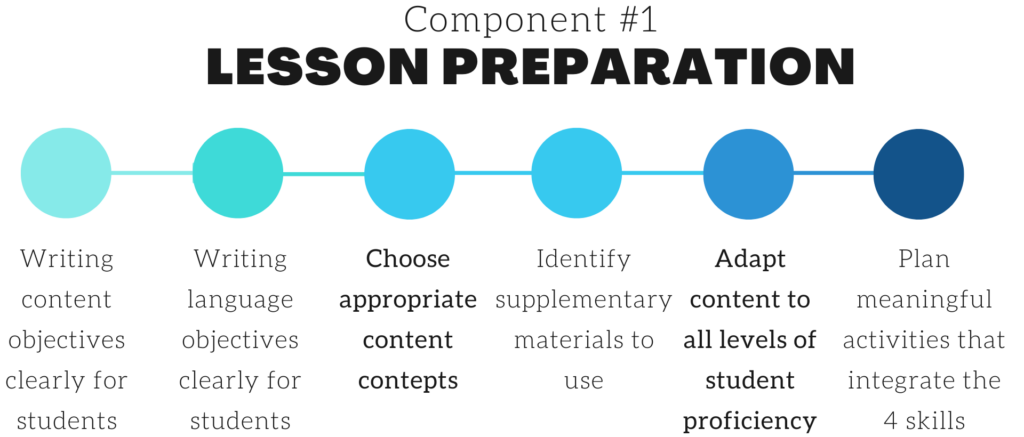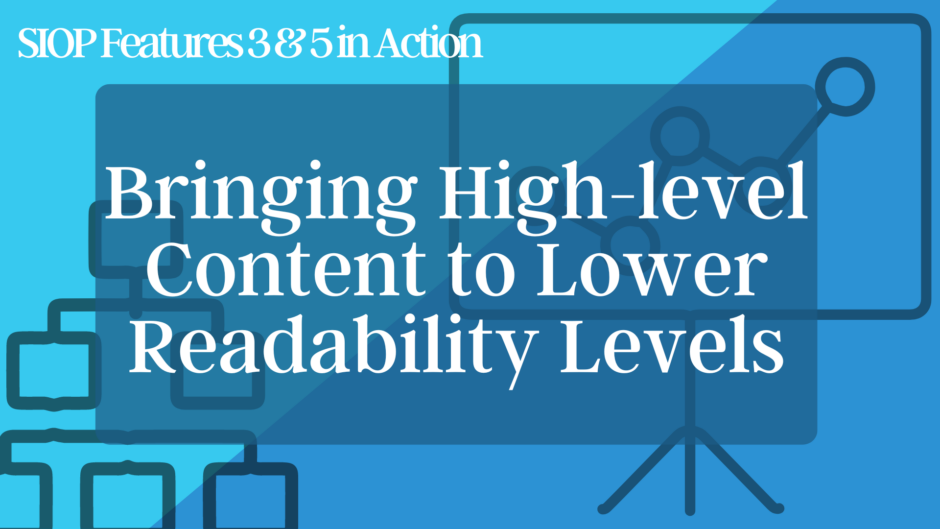Ensuring all students are successful at learning content in your classroom starts with lesson preparation. The SIOP component of Lesson Preparation sets the tone for the entire SIOP framework. In this blog post, we will highlight two features of lesson preparation: choosing appropriate content concepts for both age and educational backgrounds and adapting content to all levels of student proficiency, and look at how these two features work hand in hand and when planned for effectively, can change the trajectory of your classroom. In specific, we will focus on different methods you can use to adapt texts so that you can teach high-level content and lower readability levels

First, let’s consider feature 3, checking in on students’ educational backgrounds. It is common for EL students to have gaps in their educational background. When you are preparing to teach grade-level content to your EL students, there are many things to consider:
- Students’ first-language literacy skills
- Students’ second language literacy proficiency
- Students reading level
- Cultural and age appropriateness of the information
- Reading level of the content material
All of these considerations are important to consider when looking to adapt text to meet the needs of your learners. The answers to these questions help to create modifications your students may need. If students have strong first-language literacy skills, a text in students’ native language might be helpful. If students are missing background knowledge because the information is not appropriate for their educational background, consider pre-teaching content vocabulary prior to reading. If students have a low reading level, texts can be adapted to teach high-level content at low readability levels.
Let’s look at four different ways we can adapt text to teach high-level content at low reading levels.
Digital Resources
There are many resources available that can help bring leveled text into your classroom.
If you are looking for text at different levels focused on the same topic, ReadWorks is a great option. While it does not have different levels of the same text, you can find groupings of articles at different levels that cover the same topic.
News in levels provides world news articles in three levels. These levels are sorted by the number of words a student knows. All three levels include audio and define the pre-determined challenge words.
While Newsela is a freemium program (there is a free section of content and premium content) the free resources are leveled by Lexile and can bring the same text to varying student levels.
Highlighted Text
The strategy of highlighted text is also a great way to make higher-level text accessible to lower-level readers. You can highlight key concepts, important vocabulary, and summary statements within students’ text. The student then reads only the highlighted sections.
This strategy is best when the reading level of the text is significantly higher than the students reading level, and also when the original text includes a large amount of text that is not necessary to understand the content.
Audio Text
Including audio with your text is a great way to allow higher-level text to be accessible to lower-level readers. Elementary teachers, utilize Savvas Realize and ThinkCentral to have the audio that accompanies our reading and math curriculum, and consider adding audio to all of your Seesaw assignments. Snap&Read and Google Translate are great options for adding audio to paper assignments in both English and students’ native languages.
Adding the audio of a text is a good accommodation when your student has stronger listening comprehension skills.
Native Language Text
If your students’ first-language literacy skills are strong, you can consider providing your students with text in their native language. If this text is located on Safari, use the Snap&Read extension to translate. If you have a paper copy of the text, consider using Snap&Read or Google Translate to translate text. Allowing students a first read in their native language has been shown to help English Language Learners, particularly in understanding grammar concepts, vocabulary, instructions, and in developing teacher-student and student-student relationships.
This strategy works best when a student has strong first-language literacy skills but struggles with comprehension in English.
How do you adapt your text to meet the needs of all your learners? We’d love to hear more in the comments below!



